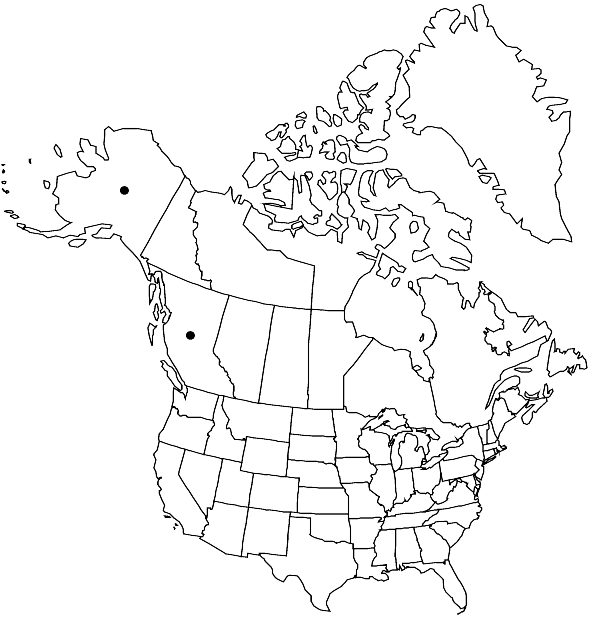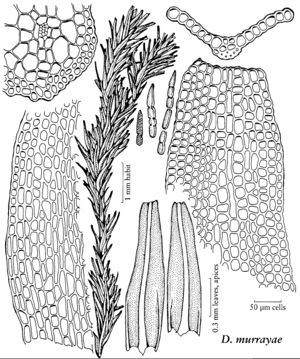Didymodon murrayae
Arctoa 11: 345, fig. 6. 2002 (as murrayeae),.
Plants green to redbrown. Stems to 1 cm, central strand present. Stem-leaves weakly appressed when dry, weakly spreading and not keeled when moist, monomorphic, oblong-lanceolate, grooved adaxially along the costa near leaf apex, 0.6–0.9 mm, base oblong in shape, margins broadly recurved in proximal 3/4 of leaf to near apex, entire but often notched laterally, apex subulate to irregularly dentate-clavate, caducous (deciduous early), commonly ending in a conical cell; costa percurrent to excurrent, not strongly spurred, not much widened or tapering, without a pad of cells, adaxial costal cells rectangular, ca. 4 cells wide at mid leaf, guide cells in 1 layer; basal laminal cells weakly differentiated medially, walls thin to evenly thickened, shortrectangular, not perforated; distal laminal cells 8–10 µm wide, 1: 1, smooth or weakly conic-mammillose at apex, lumens quadrate, walls thin, weakly convex on both sides of lamina, distal leaf margins 2-stratose in deciduous part of apex. Specialized asexual reproduction by thickened, caducous leaf apices, often toothed. Sexual condition unknown. Sporophytes unknown. Distal laminal KOH reaction red.
Habitat: Willow limbs and dead tree bark
Elevation: low to moderate elevations
Distribution

B.C., Alaska, Asia
Discussion
Didymodon murrayae was originally reported (R. H. Zander 1978f) as D. sinuosus (Mitten) Delogne, a European taxon that differs in its rupestral habitat, much larger leaves, quadrate adaxial costal cells and merely fragile leaf apex. Trichostomum tenuirostre may occasionally have similar sequentially constricted, fragile leaves, but the leaf cells are papillose and the plane margins are crenulate by projecting walls. Didymodon murrayae is similar to two other Asian species, D. gaochenii and D. hedysariformis (T. N. Otnyukova 2002), but the former differs in the rounded apex of the propagulum (no teeth), and the latter in its propagulum contorted in appearance before dispersal.
Selected References
None.
Lower Taxa
"um" is not declared as a valid unit of measurement for this property."um" is not declared as a valid unit of measurement for this property.
